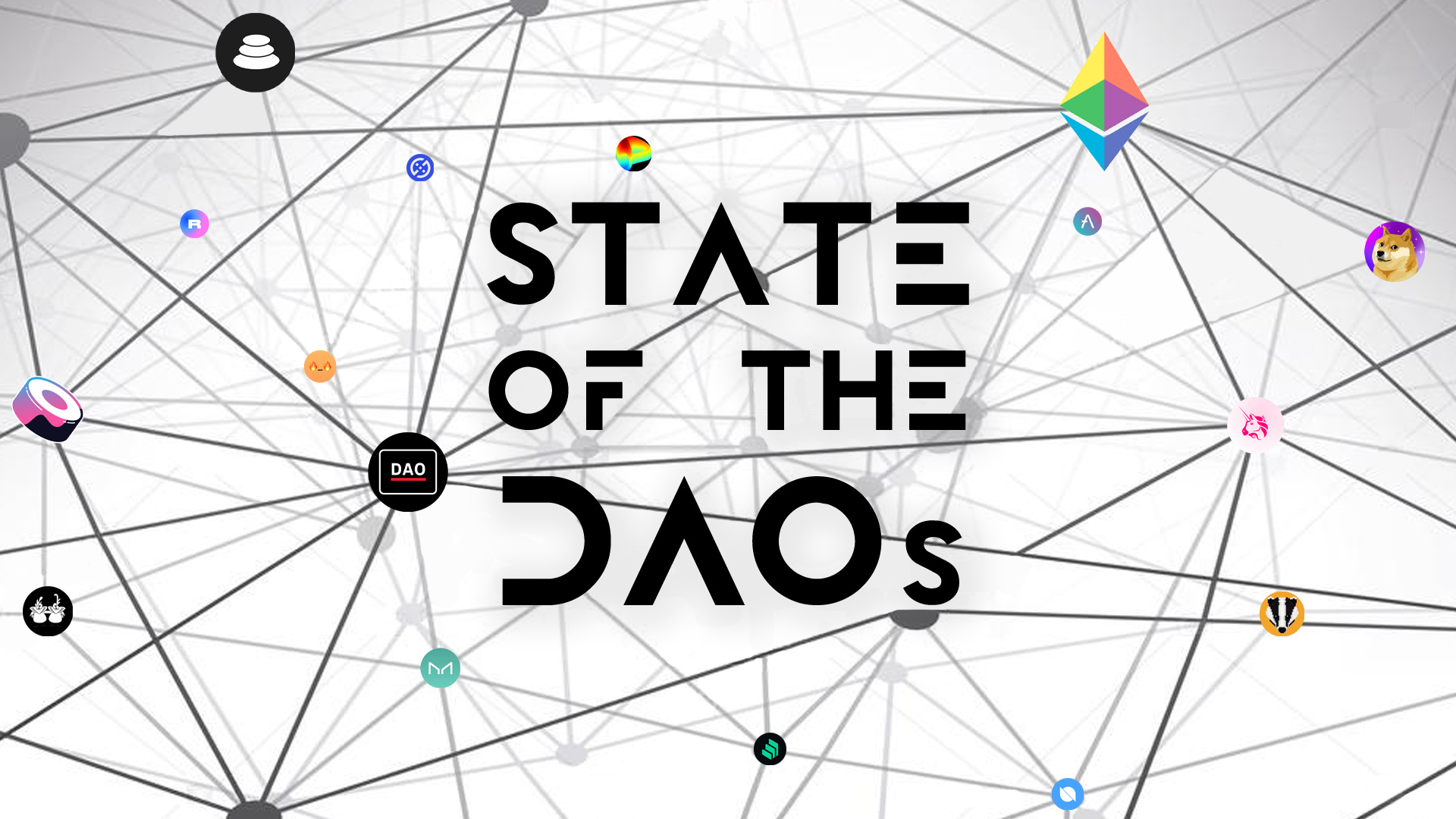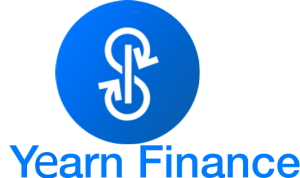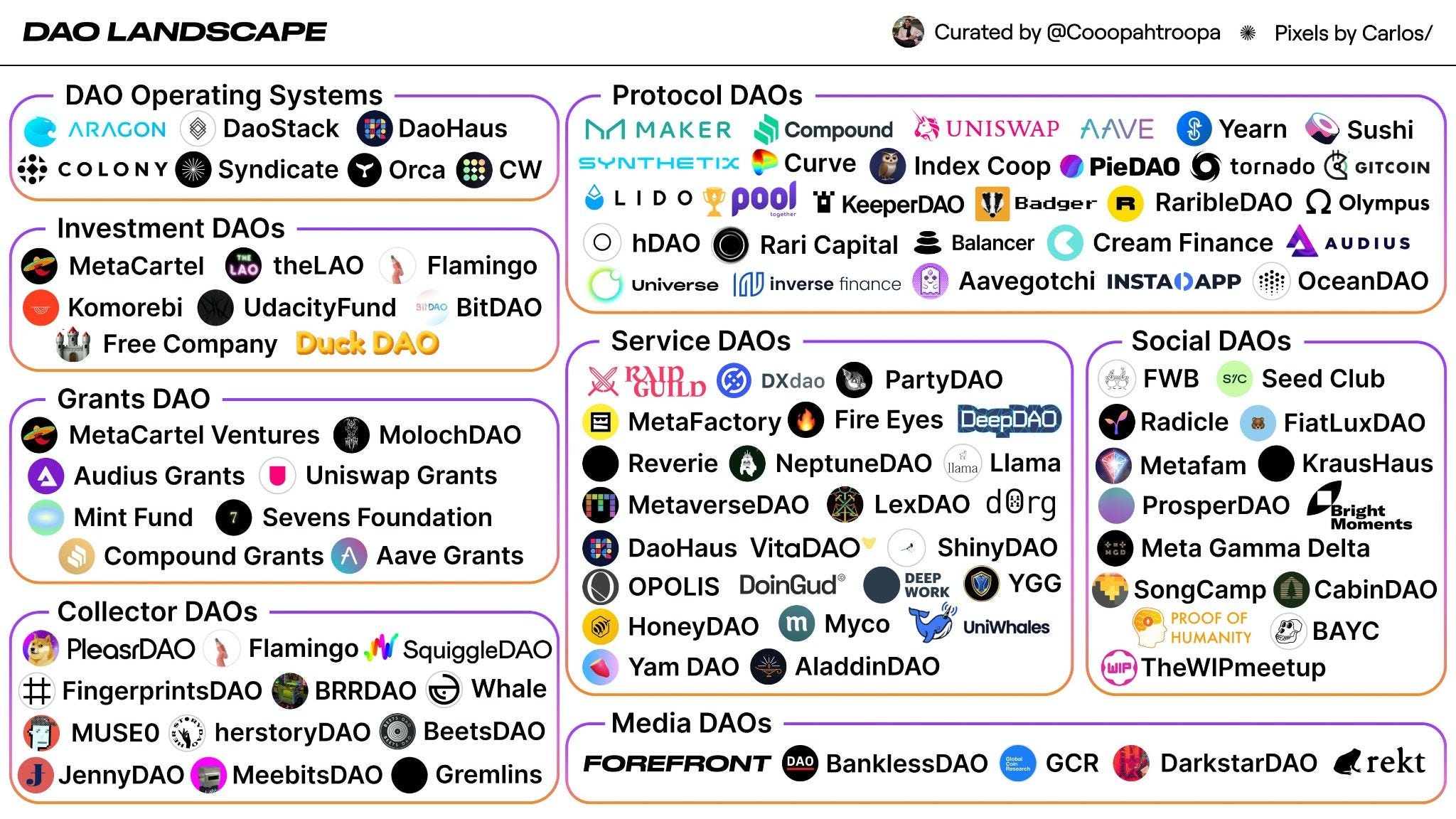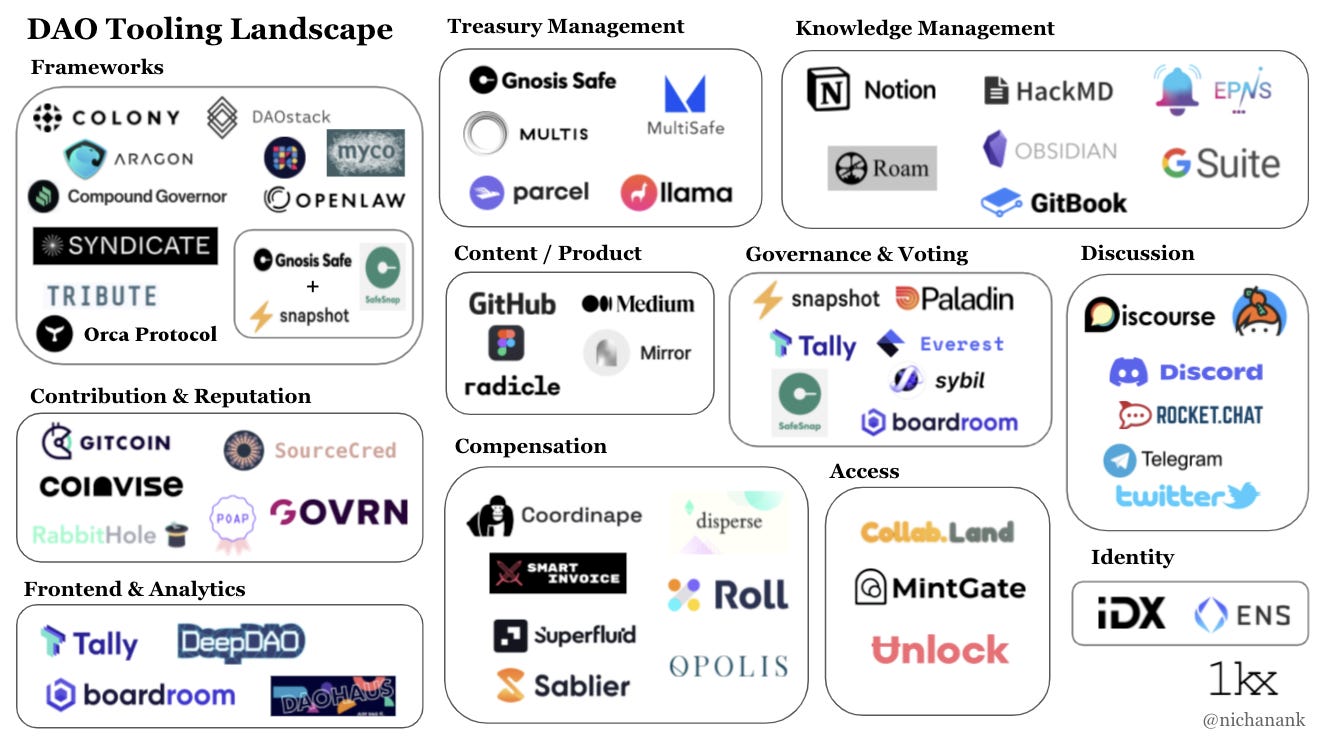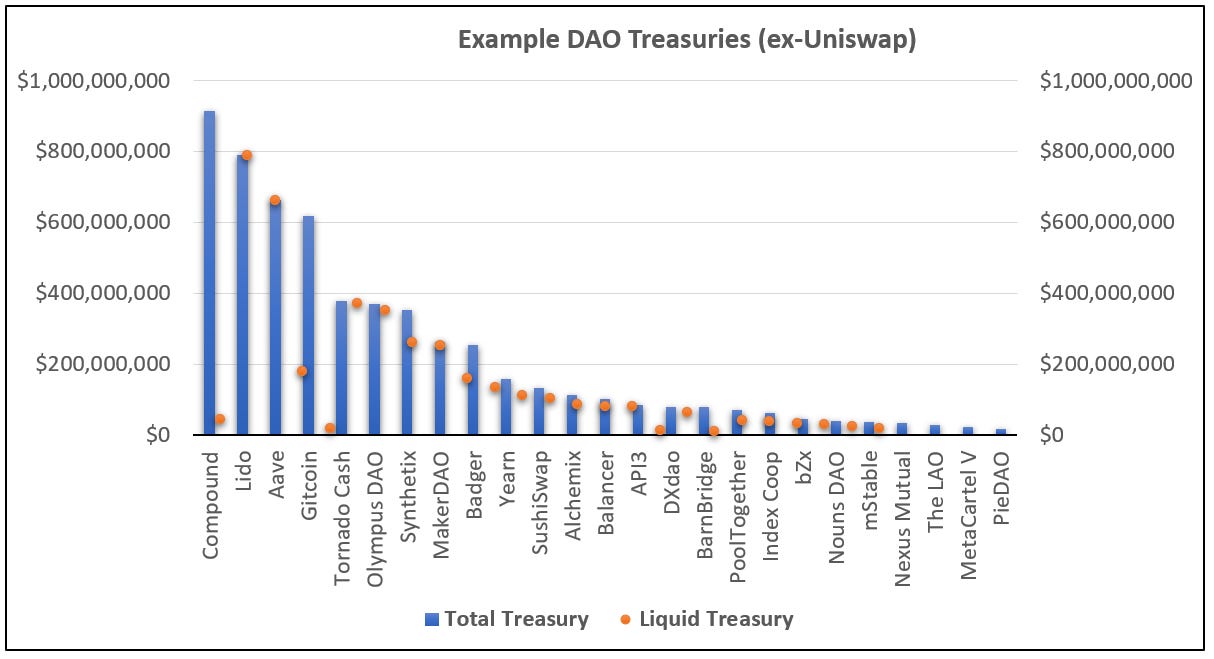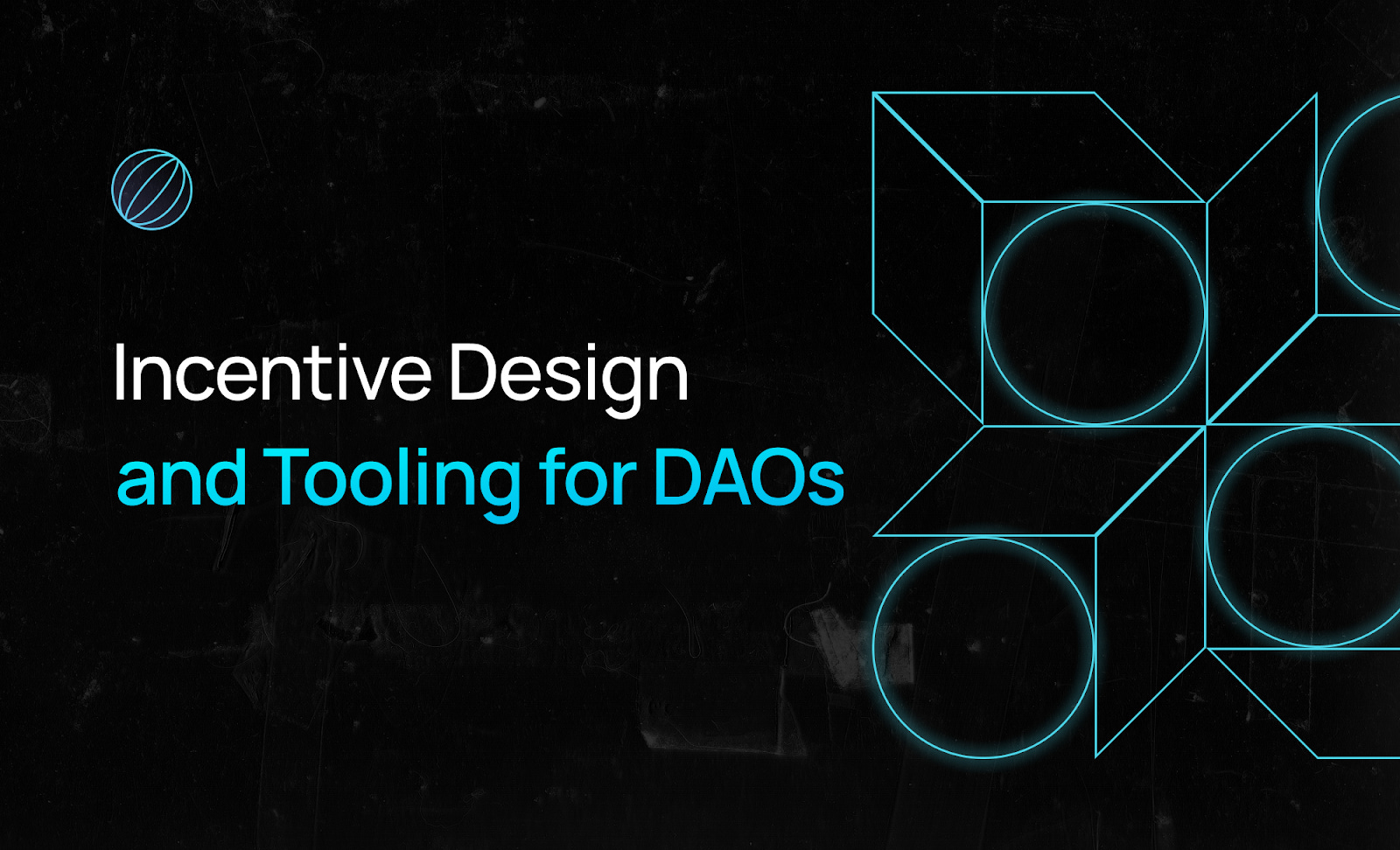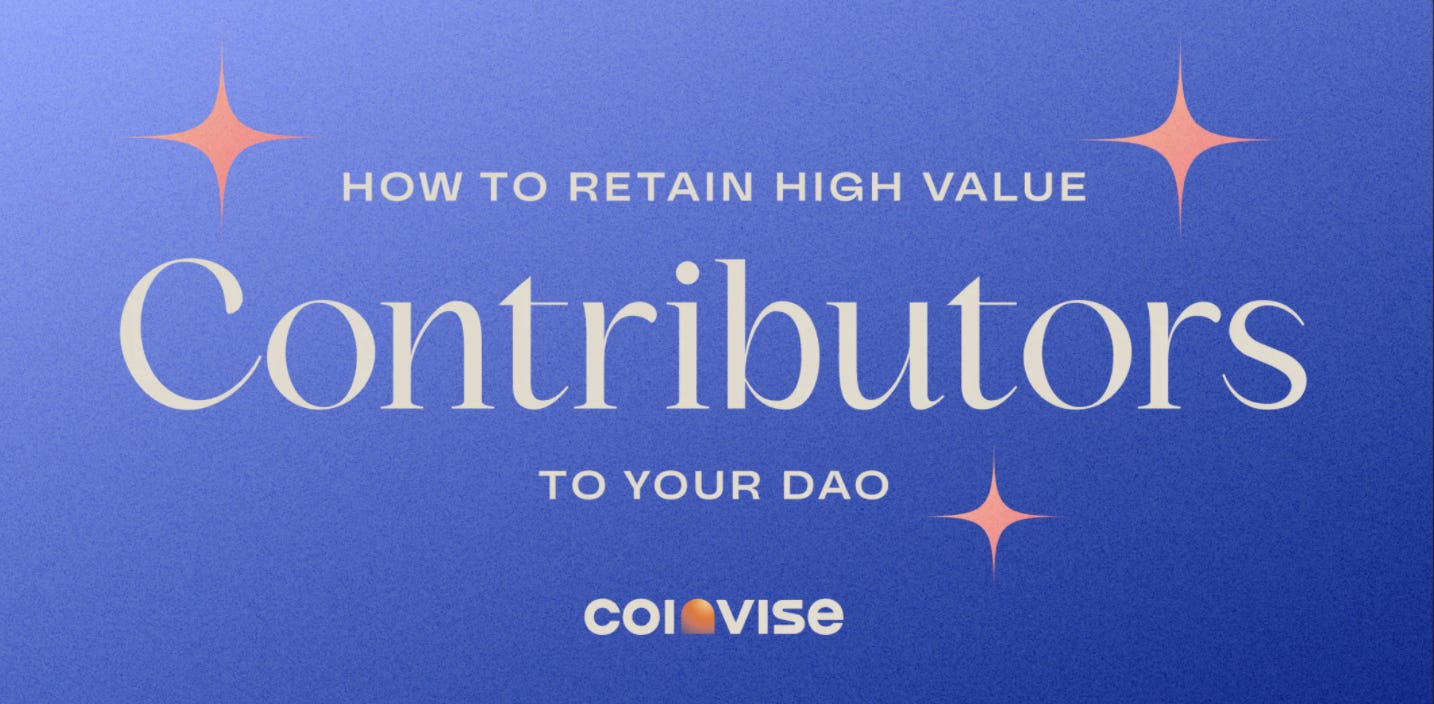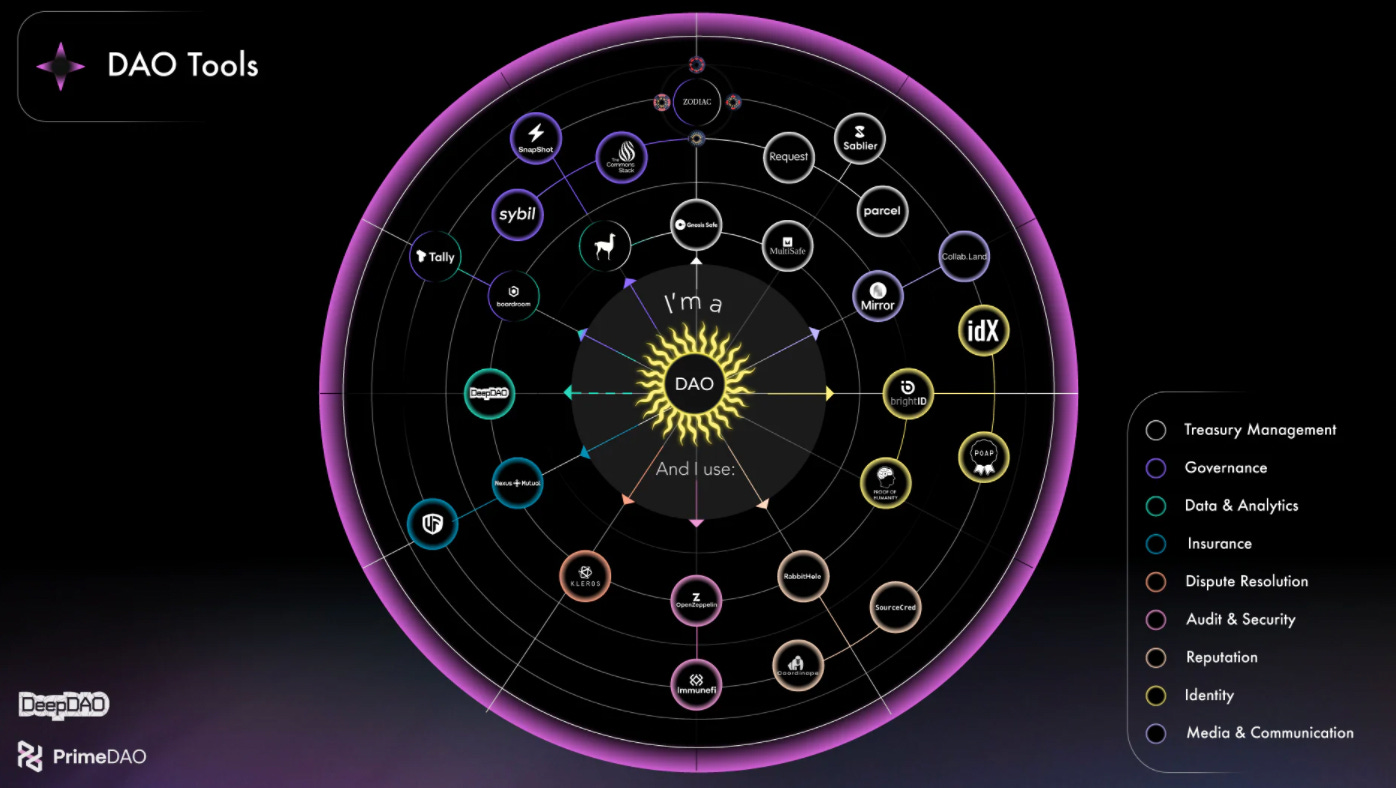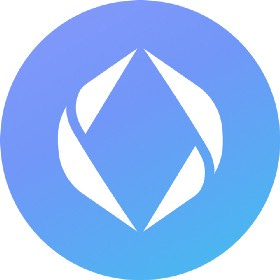State of the DAOs #3 | Overview of the DAO Ecosystem
State of the DAOs #3 | Overview of the DAO EcosystemYou're reading State of the DAOs, the high-signal low-noise newsletter for understanding DAOs.This past year we have witnessed a Cambrian explosion in the DAO landscape, with many different types of DAOs coming into existence. This week we provide a general overview of the DAO landscape and begin to explore how various DAOs interact with each other within that ecosystem. We identify some of the major categories that DAOs tend to fall within, as well as the core components or tools that enable DAOs to function effectively. Next, we share the TL;DR on the best ecosystem takes and thought pieces published in the past few weeks, making it easy for you to cut through the noise and stay up to date on the world of DAOs. Authors: BanklessDAO Writers Guild (purrplecat.eth, Adi G, Alvo von A, hirokennelly.eth, Jake and Stake, siddhearta) This is the official newsletter of the BanklessDAO. You are subscribed to this newsletter because you were a Premium Member of the Bankless Newsletter as of May 1, 2021. To unsubscribe, edit your settings here. DAO Ecosystem OverviewIntroductionAs value continues to accrue among and throughout web3, it's often argued that hierarchical bureaucratic systems enforced through laws and rules will be replaced by a strengthened trust in algocratic systems enforced by code and blockchains. Within an algocratic framework, the goal is for authority to be embedded in technology itself, specifically in the underlying code. As opposed to private, structured management styles enforced through traditional companies and organizations, algocratic systems of governance are not only becoming increasingly automated, but are also more democratized through aspects like open community voting. Although the transition towards these trustless, transparent platforms is far from perfect and in many ways just beginning, we are starting to see these very notions emerge through the accelerated growth of various DAOs over the past year. With this in mind, while it's important to recognize the emergence of specialized or niche organizations like curator DAOs or guilds crafted around existing social media platforms (like Discord) - not all of these governance systems are created equal in purpose or function. DAO CategoriesAs we witness the rise and layered complexity of DAOs, it is crucial to understand their core mechanics and how to properly differentiate them from one another as they continue to mature. To start, we can outline the more generally recognized categories throughout the DAO landscape and the various roles they play within the wider ecosystem. Project focused Project DAOs replicate similar organizational structures to traditional firms by developing and distributing products and services (complemented by tokenomics and community incentives). Although there are no generic tokenomic structures or models, the revenue of these organizations is often received by a related treasury governed by stakeholders (token holders). In some instances, these DAOs can also hold governance tokens from other protocols, enabling them to have a more cohesive and powerful influence over decisions across an interrelated and complementary ecosystem. Some examples of Project DAOs include Index Coop - a collective aimed at creating and maintaining the most formative crypto indices on the market. The coop creates crypto ETPs (exchange-traded products) that help users get broad exposure to different sectors or themes across the industry, including the Bankless BED Index. Protocol-centric Protocols like Yearn Finance, Aave, Compound, and Uniswap are often categorized through a governance structure that distributes associated tokens out to their communities so that users can vote on network decisions such as parameter adjustments or upgrades to their smart contracts. Due to the inherently complicated nature of these decisions and the higher technical experience needed to understand or implement them, some of the more knowledgeable delegates across various protocols may emerge as thought leaders in their respective fields of governance. Investor focused DAOs specialized for investors or a more concentrated investment landscape often require stakeholders to distribute capital into their organization to receive a voting share that helps determine what the DO (decentralized organization) should invest in as a collective. Members of the DO combine their expertise and knowledge to build a portfolio of investments that are aligned with their target or overarching objectives. Examples of investor DO's include organizations like Stacker Ventures. Creator & Curator While distinct in their respective focus, we can observe clear examples of creator and curator DAOs, evidenced by the highly accredited and rapidly growing PleasrDAO. As illustrated through PleasrDAO's purchase of the one-of-a-kind Wu-Tang Clan album or their fractionalized DOGE NFT - a creator or curator DAO primarily focuses on either fractionalizing and distributing shares in an NFT that a creator has made to represent ownership of a valued asset. It can also have its members contribute expertise, brand, and capital to curate projects or share in the growth of a collective portfolio. Community driven Communities can also create tokens related to a shared mission or person. While varying in use-case and utility, some examples of how these social tokens are used include access to a social platform like a discord server or telegram group. Members of community organizations can also benefit through various closed-network incentives and collaborative initiatives. Guilds Similar to community DOs are guilds. The guilds' structure differs by a focus on coordinating talent to provide high-quality services to clients and buyers. Often utilized as a competitive resource for freelancers and sole contractors, members of guilds benefit from leveraging associated marketing channels and resources - helping increase their ability to connect with and work broadly across the ecosystem.**** Mechanics & DynamicsJust as there are various DAOs and DOs, there are also various internal models and processes for members to gain access or entry. Given the array of unique ways that a DAO can structure and tier its membership and dynamics, the following examples are some of the more common methods and resources implemented by DAOs today: Token membership Token-based memberships are usually permissionless (openly accessible) to anyone and everyone - depending on the token used. Although some are created in the form of governance tokens that can be traded openly on decentralized exchanges, others have to be earned through providing services like liquidity or other work-related offers. Regardless of how they are granted or purchased, holding the token is often enough to allow members to vote on proposals and access additional aspects or locked components of the DAO. Share-based Share-based DAOs, on the other hand, are more regulated but still open for the public to engage. In the context of a share-based DAO, prospective members can submit proposals to join, which will usually include a specific service or skillset to receive tokens in exchange for work contributed. Like the mechanics of governance tokens, shares can also provide members with direct voting rights and proportional ownership, while providing the autonomy to exit at any time with their proportionate share of the treasury. These share-based DAOs are usually used for closer-knit human-centric organizations like charities, worker collectives, and investment clubs and are used for governing protocols and tokens. Prevalent issues in the DAO EcosystemIncentives for DAO Members Given the inherent level of problems surrounding L1 complexity and scalability, there are a number of market solutions such as Snapshot that help developers build side chains to optimize methods of governance. Voting platforms such as Tally also help to improve the process of members voting within their DAO. With that in mind, these alternative solutions are not without their own challenges, DAOs can suffer from an out-weighted amount of centralization, an absence of transparency, and self-referential on-chain activity. Adding to this, a lack of clear incentives for member participation outside of voting on collective decisions can lead to scattered and limited retention of members within the community.  Steven Johnson @stevenbjohnson I love the idea of “decentralized autonomous organizations” in theory. We need more experiments in how we organize talent and creativity. But I wasn’t quite sure why we needed the #blockchain to build them. So I asked @cdixon to explain. https://t.co/40FrGENuHNInefficiencies of DAO Projects & Organizations DAO management solutions such as Aragon, Boardroom, and Alchemy (DAOstack) help simplify the process for companies or organizations to create new or associated DAOs. While each of those has its own challenges, current limitations involve high costs and a shortfall of DAO centric developer resources or tools for helping efficiently work with Layer 1 and Layer 2 networks. As outlined, and relative to the ebbs and flows of any system still in its infancy, inefficiencies in the marketplace are to be expected. Specific to DAOs some examples of gaps for both users and projects & organizations include**:**
Core Components of DAOsDespite the aforementioned gaps, there are several core components or tools that help DAO ecosystems function and advance the overall rate of development. These core components include aspects like governance frameworks, treasury management, controllers, aggregators, and coordinating the talent and skills of contributors. Governance Frameworks Regardless of the context, organizations need a clear ****governance framework to function effectively. In traditional companies, the framework used typically clarifies the role of the governing body and the role of members. The same overall structures also apply to DAOs and DOs. Instead of being enforced by inherently corruptible and hierarchical management, the governance framework is implemented by smart contracts on its network and associated chain. In essence, the smart contract code specifies the parameters by which authority is shared and the underlying rules of the DAO, the process is executed on the network, and the DAOs members cast votes. Controllers In the context of DAOs, controllers help users interact with a specific governance framework by providing a user interface. Aragon was one of the first teams dedicated to DAO infrastructure that provides a suite of applications to create, manage, and govern DAOs at scale. Controllers are usually built by the same team creating the framework and offer data and APIs to help developers pull and index information, which allows for more comprehensive or diverse features to be created throughout the DAO and organization. Treasury Treasury and matters related to capital allocation are some of the more common decisions that DAO members contribute to. The funds of a DAO are usually secured in a multi-sig wallet like Gnosis Safe, that requires a specific (minimum) amount of members to approve before a transaction can be implemented. Prevalent to note is the growing number of teams building treasury contracts along with tools for signers and members to interact with locked capital and the management of assets in respective portfolios. Contributors & workers As with any traditional company, group, or collective, the talent and skills of its members are an integral component in determining growth and future trajectory. This underlying and crucial component also extends to the overall value of DAOs and DOs - both internally and externally. Members can build tools to help measure labour and output and cohesively work together in a multidisciplinary environment to help expand the resources, product, knowledge, and services of the DAO in its entirety. Although there are still issues to be addressed within and throughout each DAO or DO like the reputation of its contributors and identity, it'd be fair to state that workers helping further expand the internal and public value of the DAO are equivalent to what might be the engine room of a ship or train, helping propel its passengers and members forward. Some examples of contributing roles for DAOs and DOs include; community managers, recruiters and promoters, writers, artists, engineers, developers, and treasurers. Aggregators DAO aggregators such as Tally (in the context of voting) are sometimes referred to as the glue that bridges the gaps across these various frameworks and tools as their efforts typically centre around simplifying the nuance and complexity of the DAOs infrastructure. This is considered an important component as it helps provide a more user-friendly and streamlined experience for members when interacting and contributing to the community. Aggregators are in competitive positions to help index and provide global statistics along with data to study the broader relationships or patterns emerging between different DAOs. ConclusionUltimately, the ecosystem of DAOs are created and maintained through a unique synergy and harmony between its smart contracts and the community that helps regulate the respective on-chain and off-chain parameters. While the contract defines the organization's rules and upholds crucial aspects like the distribution and use of treasury funds, members of a DAO or DO are still required to regularly vote on proposals and system upgrades to ensure that their organization continues to deliver on its underlying purpose and vision. Once a DAOs smart contracts are live on Ethereum or their respective networks, no single member of the DAO can alter its protocols without a cohesive agreement from other members across various levels and tiers of its infrastructure - from various internal guilds to its community founders, enabling further evidence of meritocratic and algocratic systems in play. In essence, and while slightly abstract to consider, the ecosystem of DAOs could be analogous to the perennial systems that help our bodies function and work as a cohesive unit each day. While each organ has a unique, essential, and complex role to play, from the heart to the gut, to the brain - they cannot exist or operate independently. What's more, they all work together to help maintain the more significant direction of the body that houses them - which, within the context of DAO and DOs, could be considered the Ethereum network or its unique amalgamation of sub-communities. The only difference perhaps, between what helps our physical bodies function and the digital ecosystem of DAOs is that one will live on indefinitely through its data network for posterity to maintain, while the other will invariably wither and fade with the snows of yesteryear, remembered through the indelible system it helped create. Actions steps📖 Read The Ultimate DAO Report ⛏️ Dig into DAOs: Absorbing the Internet 🎧 Listen DAO Panel | Kain Warwick, CoopahTroopah, Tracheopteryx 🙏 Sponsored by Yearn Finance DAOs at a Glance
Incentive Design & Tooling for DAOsAuthor: Ben Perez DAO tooling is really hot right now, and there are many tools available. This article does a deep dive into the tools available for incentive design within the DAO ecosystem. Before jumping to use any tool, the DAO should identify the most pertinent values or circumstances of the DAO, understand the relationship to the contributor to be incentivized and identify the nature of work to be rewarded. Defining answers to these questions will help a DAO pinpoint the type of tools that will be helpful. Here is an overview of some of the core DAO tools:
Building and Running a DAO: Why Governance MattersAuthor: Tarun Chitra The first well-known early DAO was "THE DAO," which was a collective investment vehicle where contributors supplied ETH to The DAO in exchange for DAO tokens that represented the ETH supplied along with token holder voting rights. Although the project was rugged and the ETH was drained from the treasury, this early experiment in collective governance set the foundation for modern DAOs. Fearing another loss of funds, THE DAO's failure ensured that the next wave of DAOs brought better programming standards and incentivization models into DAO governance. These incentivization models first emerged on DeFi protocols and included innovations we are familiar with today:
Different types of DAOs use govenance differently:
The governance areas common to all DAOs are collective asset ownership and management, risk management for assets, and asset curation. And DAOs work best when the governance burden can be reduced faster than the natural increase in coordination costs. To maximize DAO efficiency, DAOs should:
Regardless of the DAO's mission, governance frameworks serve as the foundation of DAOlife. Governance should be front and center during DAO formation - not an afterthought to piecemeal together once DAO operations are under way. How to retain high-value contributors to your DAO?Author: Eliot Couvat This article presents strategies to retain high-value contributors within a DAO. Currently, in crypto there are more jobs available than good candidates. It is pretty challenging to attract and retain high-quality talent. DAO’s, unlike traditional organizations, enable fluid collaboration and provide flexibility of work. This fluid nature comes with the risk that most active contributors get frustrated by the level of engagement of less active ones. This article explores how culture, tools, and ownership might be the perfect recipe for high retention in a DAO.
DAO Tool ObservatoryAuthor: The DAOist DAOs have arrived, matured, and are here not only to stay, but to thrive. The alignment of mission and incentives serves as the catalyzing force for DAO growth. And while it's possible to build a DAO from scratch (shout-out BanklessDAO), a new crop of DAO launchers and tools are making it easier to both build and run a DAO at efficiency and scale. DAO launchers, like the suite of tools from Aragon, aim to streamline DAO deployment by:
DAO tools can be thought of as DAO legos and permit communities to pick and choose what tools are right for their DAO, and often include:
With these launchers and tools available today, it's possible for any community to become a DAO, and that should make all of us in the cyrptoverse bullish on DAOs' long-term potential to change the landscape of human coordination. DAOs: Communities of the FutureAuthor: Lisa Xu While users will ultimately carve unique paths through Web3, DAOs are communities that enable exploration in teams. Lisa Xu posits that a mixture of loneliness, an evolving perspective on work & the rise of crypto was catalyzed by the pandemic lockdowns to spark the emergence of this new organizational structure. Building off Web2’s successes, decentralized groups have grown rapidly in the past year. However, they can borrow best practices from their predecessors with respect to onboarding, cohort-based learning, member management and content production/delivery. Further, because each community has unique needs that change over time, bespoke & dynamic infrastructure solutions are required. On the other hand, some areas of relative promise include:
Let's Buy the US Constitution (📜,📜)Author: Packy McCormick Packy McCormick outlines his experience joining a new DAO whose ambition is to purchase the only remaining privately-owned copy of the US constitution. The group is intent on raising about $20M USD to secure the winning bid for the historic document at a Sotheby’s auction this Thursday at 6:30pm ET; only seven days after their formation. This endeavor is garnering quite the buzz and has involved substantial coordination:
The author believes “that this could be one of those moments that the world looks back on in a decade as a turning point in web3, a moment when the world woke up to the fact that it was about a whole lot more than speculation or Bitcoin.” Ecosystem Takes
  Launching a DAO Inside Your BrandAuthor: Jump 🔑 Insights:
What is DAO-to-DAO?Author: Eliot Couvat 🔑 Insights: While intra-DAO tooling is getting its wings, there is an opportunity for crypto-native inter-DAO tooling that Coinvise also aims to fill. DAO to DAO (D2D) platforms will play an important role in the ecosystem by allowing DAOs to safely exchange goods and services with each other via on-chain, web3-native tools.
Fiat DAOs: A bridge between DAO Treasuries and fiat debit cardsAuthor: Amanda Pey 🔑 Insights:
First DeFi, Then NFTs, Now DAOs, the Next Big Chapter of Crypto Is Already HereAuthor: Yasmine Karimi 🔑 Insights:
Yield DAOs: Leveraging Web3 for Better Offline LivingAuthor: Nat Eliason 🔑 Insights: What if we could leverage DAOs, NFTs, and DeFi together to enable new business models? In this article, Nat goes through three thought experiments where the sale of NFTs can bootstrap the funds to provide products and services, the NFT holders (members) get access to these services at a discount, and the profits are reinvested into yield earning activities in the DeFi ecosystem. This is the idea behind a "Yield DAO."
Get Plugged In🗺 Live DAO DirectoryThis is a free, long term, data-stewarded directory for DAOs. It's built with diverse community cooperation and participation, which aims to enable greater understanding of the emerging DAO ecosystem, allow for more interDAO communications and awareness, and increase visibility and accessibility of joining a DAO. State of the DAOs - Newbie Friendly EventsEvent HighlightsBanklessDAO - Permissionless Conference - Tickets are on sale for one of the biggest DeFi conferences! Over 5,000 people will be attending in total and every two weeks 250 more tickets unlock. Once 250 tickets are purchased, registration closes and you’ll have to wait until the next release. Speaking of the next release, your next chance is on October 1st and prices are currently at $316. Speakers include our very own Ryan Sean Adams and David Hoffman, as well as many others. Join us on Tuesday - Thursday, May 17 - 19, 2022 in sunny Palm Beach, Florida for the event. 🧳 Job Opportunities
DAO Spotlight: ENSFor many in the DAO ecosystem, the ENS airdrop was a very welcomed surprise on Nov 9th. Ethereum Name Service, aka ENS, has become critical infrastructure for the Web 3 community. Acting as the ecosystem's primary naming service, the ENS airdrop was a method of mass governance distribution to its users. Price predictions and speculation have ran rampant as many traders are looking to turn a quick profit. But Brantly Millegan (founder) & Nick Johnson (dir of ops) were quick to point out that this airdrop isn't about "rewarding" the community. This airdrop, and the subsequently required voting delegation, has effectively decentralized this core Ethereum infrastructure back to the community in the form of a DAO. Reminding us; with great power, comes great responsibility. What do you need to know?
🙏Thanks to our sponsorYearn FinanceYearn Finance is an emergent and evolving experiment in decentralized collaboration. It has no papers of incorporation, no headquarters, nor even a list of names and locations for its contributors. Yearn is a team of generous, big hearts. We care deeply for each other, DeFi, and the world. That means Yearn will not merely be a world-changing DeFi protocol, but a blueprint for the next stage of human coordination. 👉 Learn more about the Yearn DAO and how you can contribute by visiting our notion. 👉 Chat with Yearn contributors in our Discord. 👉 For more in-depth information about yearn finance see our documentation. If you liked this post from BanklessDAO, why not share it? |
Older messages
Decentralized Arts #13: IBIZA NXT 2021
Tuesday, November 16, 2021
BanklessDAO Weekly NFT and Cryptoart Newsletter
BanklessDAO Weekly Rollup #28: DAO Growth, GMI Index & AdFUNistration
Saturday, November 13, 2021
Catch up with what happened this week in the BanklessDAO.
Bankless DAO Weekly Rollup #27: Tokemak Proposal | MetaFactory "WGMI" Merch
Friday, November 5, 2021
Catch up with what happened this week in the BanklessDAO.
History of DAOs | State of the DAO #2
Wednesday, November 3, 2021
You're reading State of the DAOs, the high-signal low-noise newsletter for understanding DAOs.
Decentralized Law #0 | October 2021
Wednesday, October 27, 2021
BanklessDAO Monthly Legal Newsletter
You Might Also Like
Central African Republic’s CAR memecoin raises scrutiny
Friday, February 14, 2025
Allegations of deepfake videos and opaque token distribution cast doubts on CAR's ambitious memecoin project. ͏ ͏ ͏ ͏ ͏ ͏ ͏ ͏ ͏ ͏ ͏ ͏ ͏ ͏ ͏ ͏ ͏ ͏ ͏ ͏ ͏ ͏ ͏ ͏ ͏ ͏ ͏ ͏ ͏ ͏ ͏ ͏ ͏ ͏ ͏ ͏ ͏ ͏ ͏ ͏ ͏ ͏ ͏ ͏
January CEX Data Report: Significant Declines in Trading Volume Across Major CEXs, Spot Down 25%, Derivatives Down…
Friday, February 14, 2025
According to data collected by the WuBlockchain team, spot trading volume on major central exchanges in January 2025 decreased by 25% compared to December 2024. ͏ ͏ ͏ ͏ ͏ ͏ ͏ ͏ ͏ ͏ ͏ ͏ ͏ ͏ ͏ ͏ ͏ ͏ ͏ ͏
Previewing Coinbase Q4 2024 Earnings
Friday, February 14, 2025
Estimating Coinbase's Transaction and Subscriptions & Services Revenue in Q4 2024 ͏ ͏ ͏ ͏ ͏ ͏ ͏ ͏ ͏ ͏ ͏ ͏ ͏ ͏ ͏ ͏ ͏ ͏ ͏ ͏ ͏ ͏ ͏ ͏ ͏ ͏ ͏ ͏ ͏ ͏ ͏ ͏ ͏ ͏ ͏ ͏ ͏ ͏ ͏ ͏ ͏ ͏ ͏ ͏ ͏ ͏ ͏ ͏ ͏ ͏ ͏ ͏ ͏ ͏ ͏ ͏
ADA outperforms Bitcoin as Grayscale seeks approval for first US Cardano ETF in SEC filing
Friday, February 14, 2025
Grayscale's Cardano ETF filing could reshape ADA's market position amid regulatory uncertainty ͏ ͏ ͏ ͏ ͏ ͏ ͏ ͏ ͏ ͏ ͏ ͏ ͏ ͏ ͏ ͏ ͏ ͏ ͏ ͏ ͏ ͏ ͏ ͏ ͏ ͏ ͏ ͏ ͏ ͏ ͏ ͏ ͏ ͏ ͏ ͏ ͏ ͏ ͏ ͏ ͏ ͏ ͏ ͏ ͏ ͏ ͏ ͏ ͏
AI project trading tips: investment targets and position management
Friday, February 14, 2025
This interview delves into the investment trends, market landscape, and future opportunities within AI Agent projects. ͏ ͏ ͏ ͏ ͏ ͏ ͏ ͏ ͏ ͏ ͏ ͏ ͏ ͏ ͏ ͏ ͏ ͏ ͏ ͏ ͏ ͏ ͏ ͏ ͏ ͏ ͏ ͏ ͏ ͏ ͏ ͏ ͏ ͏ ͏ ͏ ͏ ͏ ͏ ͏ ͏
DeFi & L1L2 Weekly — 📈 Polymarket recorded a new high of 462.6k active users in Jan despite volume dip; Holesky a…
Friday, February 14, 2025
Polymarket recorded a new high of 462600 active users in January despite volume dip; Holesky and Sepolia testnets are scheduled to fork in Feb and Mar for Ethereum's Pectra upgrade. ͏ ͏ ͏ ͏ ͏ ͏ ͏ ͏
DeFi & L1L2 Weekly — 📈 Polymarket recorded a new high of 462.6k active users in Jan despite volume dip; Holesky a…
Friday, February 14, 2025
Polymarket recorded a new high of 462600 active users in January despite volume dip; Holesky and Sepolia testnets are scheduled to fork in Feb and Mar for Ethereum's Pectra upgrade. ͏ ͏ ͏ ͏ ͏ ͏ ͏ ͏
Donald Trump taps crypto advocate a16z’s Brian Quintenz for CFTC leadership
Friday, February 14, 2025
Industry leaders back Brian Quintenz's nomination, highlighting his past efforts at the CFTC and potential to revamp crypto oversight. ͏ ͏ ͏ ͏ ͏ ͏ ͏ ͏ ͏ ͏ ͏ ͏ ͏ ͏ ͏ ͏ ͏ ͏ ͏ ͏ ͏ ͏ ͏ ͏ ͏ ͏ ͏ ͏ ͏ ͏ ͏
⚡10 Tips to Make a Living Selling Info Products
Friday, February 14, 2025
PLUS: the best links, events, and jokes of the week → ͏ ͏ ͏ ͏ ͏ ͏ ͏ ͏ ͏ ͏ ͏ ͏ ͏ ͏ ͏ ͏ ͏ ͏ ͏ ͏ ͏ ͏ ͏ ͏ ͏ ͏ ͏ ͏ ͏ ͏ ͏ ͏ ͏ ͏ ͏ ͏ ͏ ͏ ͏ ͏ ͏ ͏ ͏ ͏ ͏ ͏ ͏ ͏ ͏ ͏ ͏ ͏ ͏ ͏ ͏ ͏ ͏ ͏ ͏ ͏ ͏ ͏ ͏ ͏ ͏ ͏ ͏ ͏ ͏ ͏ ͏ ͏ ͏ ͏
Interview with CryptoD: How He Made $17 Million Profit on TRUMP Coin
Friday, February 14, 2025
Author | WUblockchain, Foresight News ͏ ͏ ͏ ͏ ͏ ͏ ͏ ͏ ͏ ͏ ͏ ͏ ͏ ͏ ͏ ͏ ͏ ͏ ͏ ͏ ͏ ͏ ͏ ͏ ͏ ͏ ͏ ͏ ͏ ͏ ͏ ͏ ͏ ͏ ͏ ͏ ͏ ͏ ͏ ͏ ͏ ͏ ͏ ͏ ͏ ͏ ͏ ͏ ͏ ͏ ͏ ͏ ͏ ͏ ͏ ͏ ͏ ͏ ͏ ͏ ͏ ͏ ͏ ͏ ͏ ͏ ͏ ͏ ͏ ͏ ͏ ͏ ͏ ͏ ͏ ͏ ͏ ͏ ͏ ͏ ͏ ͏
